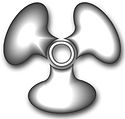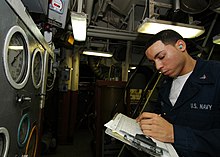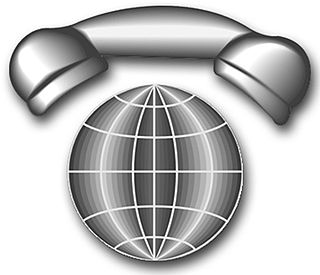| Machinist's Mate | |
|---|---|
 Rating insignia | |
| Issued by | United States Navy |
| Type | Enlisted rating |
| Abbreviation | MM |
| Specialty | Engineering / Weapons |
Machinist's mate (or MM) is a rating in the United States Navy's engineering community.
| Machinist's Mate | |
|---|---|
 Rating insignia | |
| Issued by | United States Navy |
| Type | Enlisted rating |
| Abbreviation | MM |
| Specialty | Engineering / Weapons |
Machinist's mate (or MM) is a rating in the United States Navy's engineering community.
According to the Bureau of Naval Personnel (BUPERS), the job of a Machinist's Mate is to "operate, maintain, and repair (organizational and intermediate level) ship propulsion machinery, auxiliary equipment, and outside machinery, such as: steering engine, hoisting machinery, food preparation equipment, refrigeration and air conditioning equipment, windlasses, elevators, and laundry equipment. Operate and maintain (organizational and Intermediate level) marine boilers, pumps, forced draft blowers, and heat exchangers; perform tests, transfers, and inventory of lubricating oils, fuels, and water. Maintain records and reports, and may perform duties in the generation and stowage of industrial gases." Enlistees are taught the fundamentals of this rating through on-the-job training or formal Navy schooling. Advanced technical and operational training is available in this rating during later stages of career development. [1]
Machinist's Mates (submarine) and Machinist's Mate (surface) generally fall into one of three roles:

The core job of a Machinist's Mate is the engine room. A mechanic's job in the engine room is to operate the steam plant that provides propulsion, electric power (along with Electrician's Mates), potable water, and service steam to the ship. Machinist's Mates operate the boilers that generate the steam and use it to operate main engine (propulsion turbines), turbo generators, distilling units, and various auxiliary turbines. This job was previously performed by Boiler Technicians, however, the BT rating merged with Machinist's Mate in 1997. Machinist's Mates working in the propulsion plants are often referred to as "pit snipes", "hole snipes", or just "snipes" for short.
Machinist's Mates responsible for the propulsion plant are found in machinery division (or main engine division, main propulsion division, etc. in some ships), commonly referred to simply as M-Division or MP-Division. On surface nuclear ships, propulsion mechanics are found in Reactor Propulsion Division (commonly still referred to as M-Div), Reactor Mechanical (RM) Division, or Reactor Laboratories (RL) Division. USS Enterprise was the exception, in that M-Division was still part of Engineering Department, as opposed to Reactor Department. Navy Times of 7 January 2013 reports the Navy will be realigning Machinist's Mate, and Engineman ratings. EN whose primary skills are in maintaining auxiliary engineering will become MMs. EN aboard ship will now concentrate strictly on diesel propulsion which powers many amphibious ships, while all surface shipboard auxiliary machinery work will be under the MM rating. This will affect almost 2000 ENs.
The other major place to find Machinist's Mates is in the auxiliaries division of engineering department, often referred to as "A-gang". Mechanics in this role establish training & work on mechanical equipment within and outside of the engine rooms. To include the operation and preventive maintenance of: air conditioning and refrigeration units, liquid oxygen and nitrogen units, hydraulic lifting and hoisting gear, hydraulic power plant components and mechanisms, chilled and fresh water, atmosphere control, ventilation, emergency diesel and corresponding sub-systems, ballast control, auxiliary drain, compressed air and gases, plumbing, trash disposal & other equipment as designated by the Engineering Officer (Chief Engineer, or CHENG). Members of "A-gang" may also help Damage Controlman, Gunner's Mates, or other ratings. Some listed attributes apply to Submarine Warfare to include SUBSAFE requirements for work authorization. All systems listed apply to a minimum of valve, pump maintenance repair. "A-gang" rates can be submarine qualified and will go through BESS (Basic Enlisted Submarine School) and then proceed forward to their A-school training specific to Machinist Mate rate where they will learn the above-mentioned skills. This schooling takes place in Groton, Connecticut.

Some MMs are qualified to work on nuclear propulsion plants. They are designated as Machinist's Mate nuclear (MMN). These mechanics go through a rigorous training program consisting of three months at the Nuclear Field "A" School or in previous years Machinist's Mate "A" School, six months of Naval Nuclear Power Training Command also known as Nuclear Power School, and six months at one of several Nuclear Power Training Units (NPTU). Two NPTUs are moored training ships (MTS) using S5W reactors located at the Naval Weapons Station in Charleston, South Carolina, and two additional NPTUs are land-based prototype units using a modified S5W reactor (MARF DMC) and an S8G reactor located in Ballston Spa, New York. NPTU Idaho (now decommissioned) at the Naval Reactors Facility operated the first prototype from 1953 to the mid-1990s which was for the USS Nautilus (SSN-571), named S1W, the prototype for the USS Enterprise (CVN-65), named A1W, and S5G, which are all shutdown and defueled. This course of instruction is commonly referred to as "the nuclear-power pipeline".
MMNs earn a N25O NEC (surface) or N15O (submarines) upon completion of prototype. Along with the normal duties of a propulsion mechanic, they are responsible for the operation, maintenance, and repair of the auxiliary equipment in support of the Naval reactor(s) under their care. Later in his/her career before the 18th month after reporting to the CVN/SSN/SSBN/SSGN, the MMN must qualify his/her senior in-rate watchstation. The following are for NIMITIZ CVN-68 Class (A4W) of Surface MMN's (Chief Reactor Watch for surface MMNs in Reactor Mechanical (RM) Division or Chief Machinery Operator for those in Machinery Division, and Engine Room Supervisor for submariners and FORD CVN-78 Class (A1B) Surface MMN's). The MMN must wait 5 years and be an E-5/E-6 to earn a N25S (surface both CVN Class) or N15S (submarines) NEC.
Additionally, some MMNs are designated as Engineering Laboratory Technicians (NEC N26O for surface, N16O for submariners) in Reactor Laboratories (RL) Division following successful completion of an additional 13 weeks of training. ELTs are water chemistry and radiological controls experts for their commands in addition to maintaining other MMN watchstation qualifications. After completion of required watchstation qualification, submarine ELTs may complete an additional senior in-rate watchstation in order to be assigned a supervisory NEC of N16S. For surface ELTs to achieve the supervisory NEC of N26S, they must complete a list of additional requirements. This designation is important as it garners additional pay and consideration during advancement.
Also, on submarines, some MMNs are designated as submarine nuclear propulsion plant emergency welders (NEC N51Z). They go through a two-month school learning welding, brazing, and soldering from Hull Maintenance Technician senior enlisted welders. Each submarine is required to have at least one of them to go underway. They are on board to provide emergency repairs to the plant if necessary to get the ship back to port where shipyard welders can complete a certified repair.
The range of machinist's mate ratings include: [2]

USS Narwhal (SSN-671), a unique submarine, was the third vessel of the United States Navy to be named for the narwhal, a gray and white arctic whale with a unicorn-like, ivory tusk.

Nuclear marine propulsion is propulsion of a ship or submarine with heat provided by a nuclear reactor. The power plant heats water to produce steam for a turbine used to turn the ship's propeller through a gearbox or through an electric generator and motor. Nuclear propulsion is used primarily within naval warships such as nuclear submarines and supercarriers. A small number of experimental civil nuclear ships have been built.
The Enlisted Aviation Warfare Specialist (EAWS) insignia is a military badge of the United States Navy which was created in March 1980. The insignia recognizes those members of the Navy's enlisted force who have acquired the specific professional skills, knowledge, and military experience that result in qualification for service in the aviation activities of the Navy. This includes most personnel who are trained flight deck personnel onboard aircraft carriers, or maintenance personnel at an Aircraft Intermediate Maintenance Detachment or Department (AIMD) or aircraft squadron.
Air-independent propulsion (AIP), or air-independent power, is any marine propulsion technology that allows a non-nuclear submarine to operate without access to atmospheric oxygen. AIP can augment or replace the diesel-electric propulsion system of non-nuclear vessels.
The Navy Enlisted Classification (NEC) system supplements the rating designators for enlisted members of the United States Navy. A naval rating and NEC designator are similar to the Military Occupational Specialty (MOS) designators used in the U.S. Army and U.S. Marine Corps and the Air Force Specialty Code (AFSC) used in the U.S. Air Force and the U.S. Space Force.

Aviation Machinist's Mates are United States Navy aircraft engine mechanics that inspect, adjust, test, repair, and overhaul aircraft engines and propellers. More specifically, ADs install, maintain, and service various aircraft engine types as well as various accessories, gear boxes, related fuel systems, and lubrication systems; determine reasons for engine degradation using various test equipment; perform propeller repairs; handle and service aircraft ashore or aboard ship; and can also serve as aircrewman in various types of aircraft.
Torpedoman's Mate is a United States Navy occupational rating. It was disestablished on submarines in 1995 and on surface ships on 1 October 2007. Surface torpedomen were merged into the gunner's mate rating, while submarine torpedomen were merged into the machinist's mate (non-nuclear) rating, becoming MM(W) or machinist mates (weapons). It was re-established on 30 September 2019 via NAVADMIN 225/19. The TM rating badge will be the same one in use when the rating was disestablished in 1995.

Interior communications electrician (IC) is a rating in the United States Navy. They operate and perform organizational and intermediate maintenance on alarm, warning, and indicator systems; interior communications; and ship's control, entertainment, and navigation systems. IC is one of the most versatile ratings in the U.S. Navy with equipment all the way forward, all the way aft, all the way up the mast and on the bottom of the ship. Members of this rating are commonly referred to as "IC-men" by Navy personnel.

Machinery repairman is a United States Navy occupational rating. The Shop Machinist and the Outside Machinist ratings of the Machinist's Mate rating were combined to create the Machinery Repairman rating in 1948.
In the United States Navy, Refueling and Overhaul (ROH) refers to a lengthy refitting process or procedure performed on nuclear-powered naval ships, which involves replacement of expended nuclear fuel with new fuel and a general maintenance fix-up, renovation, and often modernization of the entire ship. In theory, such a process could simply involve only refueling or only an overhaul, but in practice, nuclear refueling is always combined with an overhaul. An ROH usually takes one to two years for submarines and up to almost three years for an aircraft carrier, performed at a naval shipyard. Time periods between ROHs on a ship have varied historically from about 5–20 years (for submarines) to up to 25 years (for Nimitz-class aircraft carriers). For modern submarines and aircraft carriers, ROHs are typically carried out about midway through their operating lifespan. There are also shorter maintenance fix-ups called availabilities for ships periodically at shipyards. A particularly lengthy refueling, maintenance, and modernization process for a nuclear aircraft carrier can last up to almost three years and be referred to as a Refueling and Complex Overhaul (RCOH).

Nuclear Power School (NPS) is a technical school operated by the U.S. Navy in Goose Creek, South Carolina as a central part of a program that trains enlisted sailors, officers, KAPL civilians and Bettis civilians for shipboard nuclear power plant operation and maintenance of surface ships and submarines in the U.S. nuclear navy. As of 2020 the United States Navy operates 98 nuclear power plants, including 71 submarines, 11 aircraft carriers, and three Moored Training Ships (MTS) and two land-based training plants. NPS is the centerpiece of the training pipeline for U.S. Navy nuclear operators. It follows initial training at Nuclear Field "A" School or a college degree, and culminates with certification as a nuclear operator at one of the Navy's two Nuclear Power Training Units (NPTU).

Machinery Technician (MK) is an enlisted rating in the United States Coast Guard that is responsible for the operation, maintenance and repair of a cutter's propulsion, auxiliary equipment and outside equipment, internal combustion engines, environmental support systems, hydraulics, generator sets, and areas of hazardous material recovery and control. They are also responsible for the engineering maintenance of any small boats assigned to their command. At smaller stations and cutters they also serve as electricians.

The United States Navy job rating of electronics technician (ET) is a designation given by the Bureau of Naval Personnel (BUPERS) to enlisted members who satisfactorily complete initial Electronics Technician "A" school training.

Huntington Ingalls Industries, Inc. (HII) is the largest military shipbuilding company in the United States as well as a provider of professional services to partners in government and industry. HII, ranked No. 375 on the Fortune 500, was formed on 31 March 2011, as a divestiture from Northrop Grumman.
The United States Navy Nuclear Propulsion community consists of Naval Officers and Enlisted members who are specially trained to run and maintain the nuclear reactors that power the submarines and aircraft carriers of the United States Navy. Operating more than 80 nuclear-powered ships, the United States Navy is currently the largest naval force in the world.

Engine room artificer (ERA) is a specialised position in the crews of naval vessels – especially those of the British Royal Navy (RN) and other Commonwealth navies. An ERA is usually a fitter and turner, boilermaker, coppersmith or enginesmith. On larger vessels, there are several ERAs, divided into three or more classes. Each of these positions is normally associated with a specific non-commissioned rank and level of experience – for example, an ERA is normally a Chief Petty Officer (CPO). The designation ERA was introduced in the early days of steam-powered warships, and in most navies is now obsolete.

Vice Admiral Thomas J. Moore was a senior officer in the United States Navy. He retired from active duty on June 19, 2020, after 39 years of service. He currently serves as Vice President of Nuclear Operations at Huntington Ingalls Industries.

A moored training ship (MTS) is a United States Navy nuclear powered submarine that has been converted to a training ship for the Naval Nuclear Power Training Command's Nuclear Power Training Unit (NPTU) at Naval Support Activity Charleston in South Carolina. The NPTU is part of the Navy's Nuclear Power School at Goose Creek, S.C. The Navy uses decommissioned nuclear submarines and converts them to MTSs to train personnel in the operation and maintenance of submarines and their nuclear reactors. The first moored training ship was USS Sam Rayburn (SSBN-635) a James Madison-class fleet ballistic missile submarine, redesignated as (MTS-635) in 1989, followed a year later by USS Daniel Webster (SSBN-626), a Lafayette-class ballistic missile submarine, redesignated as (MTS-626). Conversion of these two boats took place at the Charleston Naval Shipyard and modifications included special mooring arrangements with a mechanism to absorb power generated by the main propulsion shaft.